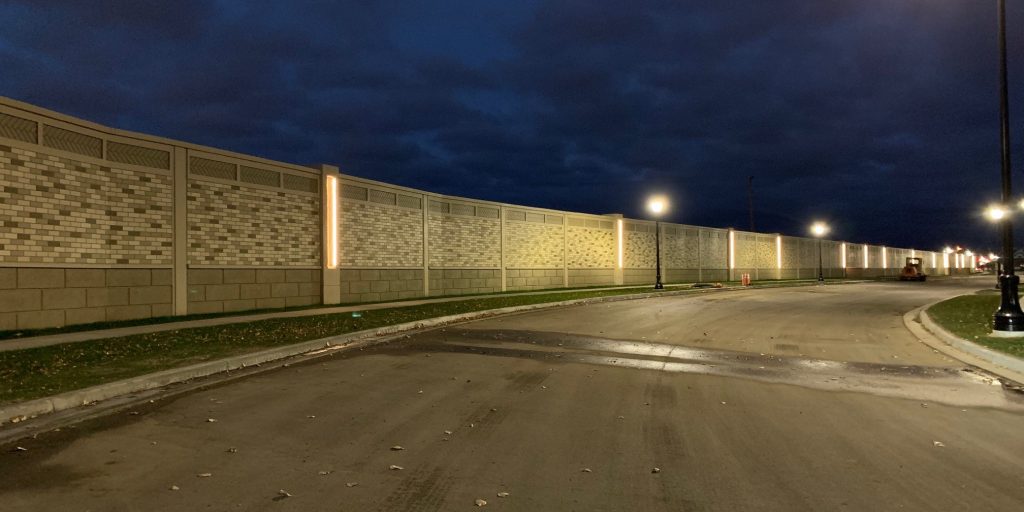2021 Crown Communities Award winner: Phase 1 of Minot, N.D.’s Mouse River Enhanced Flood Protection Plan
In 2011, Minot, N.D. experienced its worst flood event ever. Heavy rains in Canada forced public works officials there to start releasing water, which flowed into the Mouse/Souris River Basin, a 375 mile-long river adjacent to Minot that drains into 23,600 square miles.
Ahead of the surge, evacuations were ordered, and residents fled. At its height, the river’s flow was recorded at 27,400 cubic feet per second—more than five times the expected 100-year flow rate.
“Agricultural land was severely impacted, and to this day still bears the scars,” said David Ashley, owner of Ashley Farms in North Dakota and chair of the five-member Souris River Joint Board, which is overseeing an expansive flood prevention project. “It was insurmountable, no matter what we tried to do. It (took) a huge toll on the basin, not only monetarily, but also psychologically.”
According to Dan Jonasson, director of Minot’s public works department, local officials evacuated around 12,000 people ahead of the 2011 floodwater surge. Almost 4,000 structures McHenry County, N.D., and Ward County, N.D. were flooded, representing a fourth of Minot’s population.
“The (Army) Corps of Engineers estimates about $600 million in damages. Our estimates are closer to $1 billion in damages,” Jonasson said. Nearly a decade later, the region is still digging itself out of the fiscal hole while guiding a multi-phase, nearly $1 billion dollar (estimated) engineering project that’s intended to shore up the region’s defenses ahead of the next historic flood.
Given its scope and necessity, the project’s first phase is the winner of the 2021 Crown Communities Award, an annual series of awards issued by American City & County recognizing notable projects that have a substantial impact on constituents.
Phase 1 of the Mouse River Enhanced Flood Protection Plan, completed last fall, cost about $43 million. It encompasses concrete floodwall and other structural components, along with approximately 3,000 feet of roadway; 45,000 cubic yards of dirt; the region’s new 190,000 gallons per minute (gpm) Broadway Pump Station; a 40,000 gpm sanitary lift station; and 18,000 feet of utility reconstruction.
“It is a challenge. This is huge. When we look at addressing this as a basin-wide project, there’s really nothing that’s been tackled of this magnitude,” Ashley said. “There were all the major challenges—permitting, design, it was just a huge challenge.”
Among the most difficult hurdles to overcome, funding required a lot of legwork, he continued, noting: “There were some minor acquisition scenarios that were paid for with federal dollars … but the bulk is, far and away, state and local dollars.”
The full Mouse River Enhanced Flood Protection Plan is expansive, covering 15 phases and the entire basin with increased flood protection through both rural and urban projects. Based on the region’s current biennium $70 million funding allocation distributed by the state, it’s expected to take at least two more decades to complete. Because of its size and the time required to complete each leg, phases two and three of the Mouse River Enhanced Flood Protection Plan, which took $40 million and several years to complete, was awarded the same recognition by American City & County in 2020. Those two phases included the completion of levees, a drainage pump station, utility river crossings and a removeable road closure, among other elements.
In tackling the endeavor, Ashley said breaking it down into manageable pieces has made all the difference.
“To get our head around it,” he explained, “One of the approaches we’ve taken that has been very effective has been the phasing approach.”
All of the phases have been prioritized to maximize taking the most people out of the floodplain in the shortest timeframe. Looking to the immediate future, “We are working toward completing this milestone one,” which includes phases one through five, he said. When completed, milestone one will finalize flood protection for the entire north side of the river basin— removing approximately 60 percent of Minot’s residents from the floodplain.
And while tiring and stressful at times, “You look at the things you’ve accomplished and it’s so rewarding,” Jonasson said. “I’ve been doing this in some way, shape or form … for about 40 years. To me, it’s an honor to be involved in a project of this magnitude—it’s a once in a lifetime (opportunity), to be able to say that you were involved in something this big.”




















